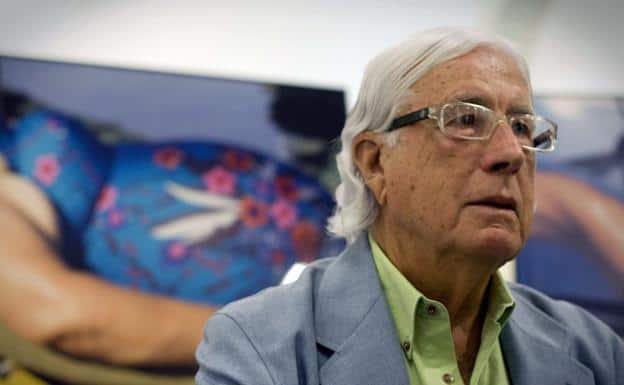Surely Carlos Pérez Siquierto the end he will have fulfilled the maxim that he repeated in recent years: “I will die with the photos on.” Words of a man always sly, who made humor with a serious face and in love with photography.
Pérez Siquier, a master in the use of color, at the height of his friend Martin Parr, perhaps better, died this Monday at the age of 90 at the Torrecárdenas University Hospital in his native Almería, where he had entered last week as a result of an aneurysm in the abdomen, sources close to the photographer have reported. Born in 1930, National Photography Award in 2003, he was a renovator of Spanish photography thanks, above all, to the impulse he gave from the Almeriense Photographic Group (Afal), name of the magazine of that association and of the group of authors that modernized the art of the image in Spain in the mid-1950s.
Pérez Siquier, together with José María Artero, who died in 1991, put in contact, thanks to this publication, photographers from different parts of Spain to make their work and theories known, to get away from the salonism and pictorialism reigning in national photography.
Like most of the great Spanish photographers, Pérez Siquier had another occupation, in a bank, which allowed him to do what he liked even if he couldn’t make a living from it. Enthusiastic about new projects to publicize his work, last Monday an extension of the Pérez Siquier Center was inaugurated, which was built in Olula del Río (Almería) in May 2017. “I kept talking about the publication and exhibition that we were preparing ”, Juan Manuel Martín, director of the Ibáñez Cosentino Art Foundation, on which the Pérez Siquier Center depends, told EL PAÍS. That book, “with about 350 pages,” says Martín, “includes unpublished photos” of his best-known work, the one he did in 1956, in black and white, of the depressed La Chanca neighborhood of Almeria in the 1950s.
Among the images he took at that time, the so-called White Girl stands out, the portrait he made of Ángeles Hernández, then an 11-year-old girl whom he portrayed with her little white dress leaning on the doorpost of her cave house in the neighborhood Almeria. “It was like a crush. And I’m very fast, I shot a single photo. Then she went home without saying a word and I never heard from her again, “she told EL PAÍS on the occasion of the exhibition that the Mapfre Foundation dedicated to her in Barcelona in 2020.
In 1962 he returned to La Chanca, but to start a series in color, at that time Afal’s adventure ended and he began working as a photographer for the Ministry of Information and Tourism.

